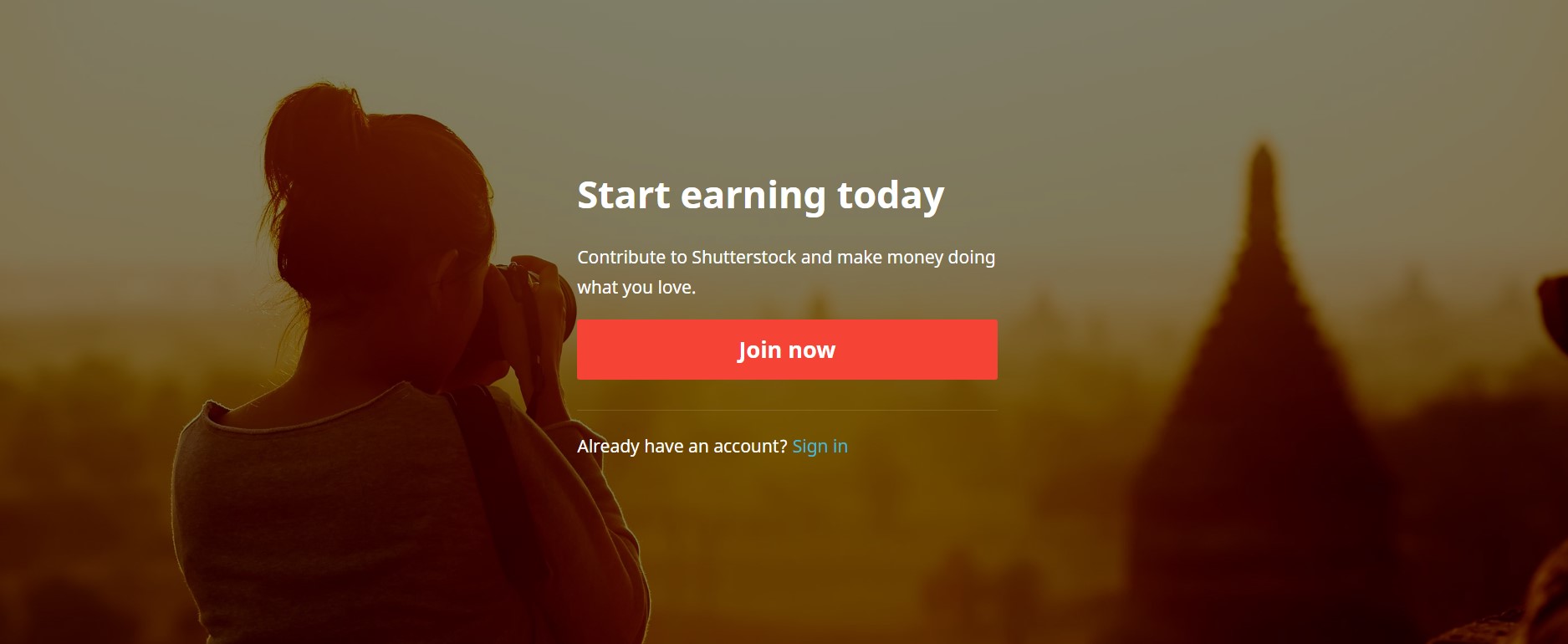If you’re passionate about photography, illustration, or design, and you’re looking for a way to turn your creativity into income, Shutterstock might be just the platform for you. As one of the leading stock photo websites in the world, Shutterstock offers a huge marketplace where contributors can showcase their work to millions of potential buyers. Becoming a contributor is a fantastic opportunity to share your unique visuals and earn royalties whenever someone licenses your content. Whether you’re a seasoned pro or just starting out, understanding how the platform works and what it takes to join is the first step toward building a successful portfolio and making your mark in the stock photography world.
Requirements to Join Shutterstock as a Contributor

Getting started as a Shutterstock contributor isn’t too complicated, but there are some important requirements you need to meet. First, you should be at least 18 years old—that’s a standard criterion for most online platforms. Next, you’ll need to submit some sample content for review. These samples should be high-quality images or videos that demonstrate your skills and style. Shutterstock looks for original, well-composed, and technically sound work, so take your time to select your best pieces.
In terms of technical specifications, your submissions should adhere to Shutterstock‘s standards: high resolution (generally 4MP minimum for photos), proper lighting, clear focus, and no watermarks. For contributors uploading videos, the content should be in line with the platform’s format and quality guidelines.
Additionally, you’ll need to create an account with valid personal details and agree to Shutterstock‘s contributor agreement. This legal document covers copyright ownership and licensing terms, so it’s important to read it carefully. Having a consistent style or niche can also help you stand out, but most importantly, your work should be original and legally yours. Once your samples pass the review process, you’ll be officially accepted as a contributor and able to start uploading your content. Remember, the more unique and high-quality your submissions, the better your chances of success and earning potential on the platform.
Steps to Sign Up and Create Your Contributor Account
Getting started as a Shutterstock contributor is pretty straightforward, but it’s important to follow each step carefully to set yourself up for success. First things first, head over to the Shutterstock Contributor website. You’ll find a dedicated sign-up button—usually labeled something like “Become a Contributor” or “Join Now.”
Once you click that, you’ll be prompted to fill out a registration form. Here’s what you’ll typically need:
- Email Address: Use a valid email that you check regularly, as this will be your primary contact point.
- Username and Password: Choose a unique username and a strong password. Make sure it’s something memorable but secure.
- Personal Details: Your full name, country of residence, and sometimes your phone number.
- Tax Information: Depending on your location, you might need to provide tax details for royalty payments.
After submitting your registration, Shutterstock will send you a confirmation email. Be sure to check your inbox (and spam folder, just in case). Click the verification link to activate your account. Once verified, you can log in and start setting up your profile.
Next, take some time to customize your profile. Upload a friendly profile picture, write a short bio that highlights your creative background, and link your social media if you want to showcase your portfolio or connect with clients. A complete profile not only boosts your credibility but also helps you stand out to potential buyers.
Finally, review Shutterstock’s contributor guidelines. Familiarize yourself with their content policies, licensing options, and technical requirements. Knowing the rules upfront will save you time and help you avoid rejection when submitting your images or videos.
Preparing and Uploading High-Quality Content
Now that your account is set up, the fun begins—creating and uploading content that people want to buy! The key here is quality. Shutterstock is a marketplace for professional, high-quality images, videos, and illustrations, so your content needs to meet certain standards.
Start by focusing on your niche. Are you into travel photography, food styling, lifestyle shots, or maybe abstract designs? Specializing helps you target specific buyers and build a recognizable style. Consistency in your portfolio can boost your visibility and sales.
Before uploading, make sure your files meet Shutterstock’s technical specifications:
| Content Type | Minimum Resolution | File Format |
|---|---|---|
| Photos | 4 MP (e.g., 2400 x 1600 pixels) | JPEG |
| Videos | Full HD (1920×1080) | MOV or MP4 |
| Illustrations | 300 DPI for print, vector formats preferred | AI, EPS, or high-res JPEGs |
When preparing your files, focus on the following:
- Sharpness and Clarity: Ensure your images are in focus with good lighting.
- Proper Composition: Use the rule of thirds, leading lines, and balance to create visually appealing shots.
- Natural Colors: Avoid oversaturation or unnatural color casts unless intentional.
- Minimal Noise and Artifacts: Clean images free of digital noise or compression artifacts are much more likely to be accepted.
When it comes to uploading, add descriptive titles, detailed descriptions, and relevant keywords. Be honest and precise to improve discoverability. Use keywords that accurately describe your content, including the subject, mood, location, and style. This makes it easier for buyers to find your work.
Finally, submit your content for review. Shutterstock’s review team will assess your files against their quality and content guidelines. If your submission is rejected, don’t be discouraged—review the feedback, improve your files, and try again. Consistent quality and persistence are the keys to building a successful portfolio on Shutterstock.
Optimizing Your Submissions for Better Visibility
So, you’ve uploaded some fantastic images, but how do you make sure they actually get noticed? The key is optimizing your submissions so they stand out in search results and attract potential buyers. Think of it like setting up a storefront—you want it to be attractive, easy to find, and relevant to what people are searching for.
First things first, pay attention to your titles and descriptions. Use clear, descriptive language that accurately reflects the content of your images. Incorporate relevant keywords naturally—these are the words people might type into Shutterstock’s search bar when looking for images like yours. For example, instead of a vague title like “Beautiful Scene,” try “Sunset Over Mountain Lake with Reflection.”
Next, utilize the tags feature wisely. Shutterstock allows you to add multiple tags to each submission. Think about all the possible search terms that someone might use to find your image. Be specific—include colors, locations, emotions, and concepts. For instance, if you upload a photo of a smiling woman holding a coffee cup, tags could include “happy woman,” “coffee,” “morning routine,” “cafe,” “smile,” and “relax.”
Another tip is to focus on the quality and uniqueness of your images. High-resolution, well-composed photos tend to perform better. Avoid overly edited or heavily filtered images unless it’s intentional for the style. Remember, buyers are often looking for authentic, high-quality visuals.
Lastly, keep an eye on trending topics and popular search terms. If you notice certain themes or subjects gaining popularity, consider creating content aligned with those trends. Shutterstock’s marketplace is dynamic, and staying current can significantly boost your visibility.
Tips for Increasing Your Earnings on Shutterstock
Ready to turn your photography hobby into a steady income stream? Increasing your earnings on Shutterstock is all about strategy, consistency, and understanding what buyers want. Here are some practical tips to help you boost your revenue:
1. Consistent Uploads: The more high-quality images you upload, the more chances you have of making sales. Set a realistic goal—whether it’s weekly or monthly—and stick to it. Over time, a larger portfolio means more opportunities for your work to be discovered.
2. Diversify Your Portfolio: Don’t put all your eggs in one basket. Cover a range of subjects, styles, and themes. This not only broadens your appeal but also increases the likelihood of matching different buyer needs. For example, include everything from business concepts and lifestyle shots to nature and abstract images.
3. Focus on Evergreen Content: Some topics are always in demand—think business, health, education, and everyday life. Creating evergreen content ensures steady sales over time, regardless of trends.
4. Promote Your Work: Share your Shutterstock portfolio on your social media channels, personal website, or blog. The more exposure your work gets, the higher the chance someone will find and purchase your images.
5. Keep Up with Shutterstock’s Trends and Updates: Shutterstock often updates its algorithms and features. Staying informed about these changes can help you adapt your strategy accordingly. Participate in forums or community groups where contributors share tips and experiences.
6. Use Analytics: Regularly review your sales data to see which images perform best. This insight can guide your future uploads—focusing on styles or subjects that resonate most with buyers.
| Tip | Why It Matters |
|---|---|
| Consistent Uploads | Build a robust portfolio for increased visibility and sales opportunities. |
| Diversification | Appeal to a broader audience and reduce dependence on a single niche. |
| Focus on Evergreen Content | Ensures ongoing sales regardless of current trends. |
| Promotion | Drive external traffic to your portfolio, expanding your reach. |
| Analyze & Adapt | Improve your strategy based on what sells best. |
Remember, boosting your earnings on Shutterstock isn’t an overnight process. It takes time, effort, and a bit of patience. Keep honing your craft, optimizing your submissions, and engaging with the community, and you’ll see your income grow steadily over time!
Understanding Shutterstock’s Review and Approval Process
Getting your beautiful photos or creative designs onto Shutterstock is an exciting goal, but before your work goes live, it needs to pass through their review and approval process. This step is all about quality control — ensuring the content meets Shutterstock’s standards and fits their marketplace. Knowing what to expect can make this process smoother and help you get your work approved faster.
When you upload your assets, Shutterstock’s review team carefully examines each submission. They check for several key factors:
- Technical Quality: Is your image sharp, well-exposed, and properly colored? For vectors and illustrations, are the lines clean and the colors vibrant?
- Content Originality and Compliance: Does your work avoid copyright infringement? Is it original, and does it adhere to Shutterstock’s content guidelines?
- Model and Property Releases: For images featuring recognizable people or private property, do you have the necessary releases uploaded?
- Metadata Accuracy: Are your titles, descriptions, and keywords relevant and precise? Good metadata helps your content get found!
The review process typically takes anywhere from a few hours to a few days, depending on the volume of submissions. Shutterstock’s team provides feedback if your submission doesn’t meet their standards, so don’t get discouraged if you need to make adjustments. You can always revise and resubmit your work.
To improve your chances of approval:
- Always upload high-resolution, high-quality files.
- Follow Shutterstock’s content guidelines carefully.
- Ensure your metadata is clear, accurate, and optimized for search.
- Be patient and learn from any feedback you receive — it’s a valuable part of the process!
- Popular color palettes and design styles
- Emerging themes like sustainability, diversity, and tech innovation
- New content formats, such as AR/VR assets or interactive media
- Research current trends: Stay updated with popular themes and styles to align your submissions with market needs.
- Invest in quality equipment: Use high-resolution cameras and editing tools to enhance your content’s professionalism.
- Develop a consistent workflow: Establish a routine for capturing, editing, and uploading your work regularly.
- Optimize your submissions: Use descriptive, keyword-rich titles and tags to improve discoverability.
- Engage with the community: Participate in forums, webinars, and tutorials to learn best practices and stay motivated.
Remember, the review isn’t just about gatekeeping; it’s designed to maintain a high standard for the marketplace, which benefits everyone. Your goal should be to submit work that’s polished, original, and compliant. With a little patience and attention to detail, you’ll be well on your way to becoming a successful Shutterstock contributor in 2025.
Staying Updated with Shutterstock Policies and Trends in 2025
As a Shutterstock contributor, staying in the loop with the latest policies and market trends is crucial. The digital marketplace is always evolving, and what’s popular or permitted today might change tomorrow. In 2025, Shutterstock continues to adapt, emphasizing quality, diversity, and compliance. Here’s how you can stay ahead of the game:
Regularly Check Shutterstock’s Contributor Resources
Shutterstock offers a dedicated portal for contributors filled with updates, guidelines, and best practices. Make it a habit to visit their Contributor Dashboard often. They post official announcements about policy changes, new content categories, and technical requirements.
Subscribe to Newsletters and Community Forums
Joining their email newsletters and community forums keeps you informed about current trends, popular themes, and platform updates. Engaging with other contributors can also provide helpful tips and insights.
Follow Industry Trends and Visual Styles
In 2025, visual trends are heavily influenced by cultural shifts, technological advancements, and global events. Keep an eye on:
Use tools like Pinterest, Behance, or Trend Hunter to spot what’s hot. Incorporate these trends into your work to stay relevant and increase your chances of sales.
Stay Compliant with Policy Changes
Shutterstock’s policies around model releases, intellectual property, and content standards can evolve. Regularly review their Terms of Service and Content Guidelines. This ensures your submissions always meet current requirements, avoiding rejections or account issues.
Invest in Continuous Learning
Attend webinars, tutorials, or online courses offered by Shutterstock or industry experts. These resources can help you improve your technical skills and understand new market opportunities.
In summary, staying updated isn’t just about avoiding trouble — it’s about seizing opportunities to grow as a contributor and keep your portfolio fresh and competitive. In 2025, being proactive with policies and trends will help you stand out and thrive in Shutterstock’s dynamic marketplace.
Conclusion and Next Steps to Succeed as a Shutterstock Contributor
Becoming a successful Shutterstock contributor in 2025 requires dedication, strategic planning, and continuous improvement. To maximize your earning potential and grow your portfolio, focus on creating high-quality, original content that meets current market demands. Remember, Shutterstock values images that are technically sound, visually appealing, and relevant to trending topics.
Next steps include:
Additionally, consider diversifying your portfolio across various categories such as vector graphics, videos, and illustrations to broaden your income streams. Regularly reviewing your performance metrics and feedback can help you identify areas for improvement and adapt your strategy accordingly.
In conclusion, success as a Shutterstock contributor in 2025 hinges on your commitment to quality, consistency, and staying informed about industry trends. By following these next steps, you will be well on your way to building a sustainable and profitable creative career.


